
11 minute read
Caring for coats
Could you be a cat fosterer?
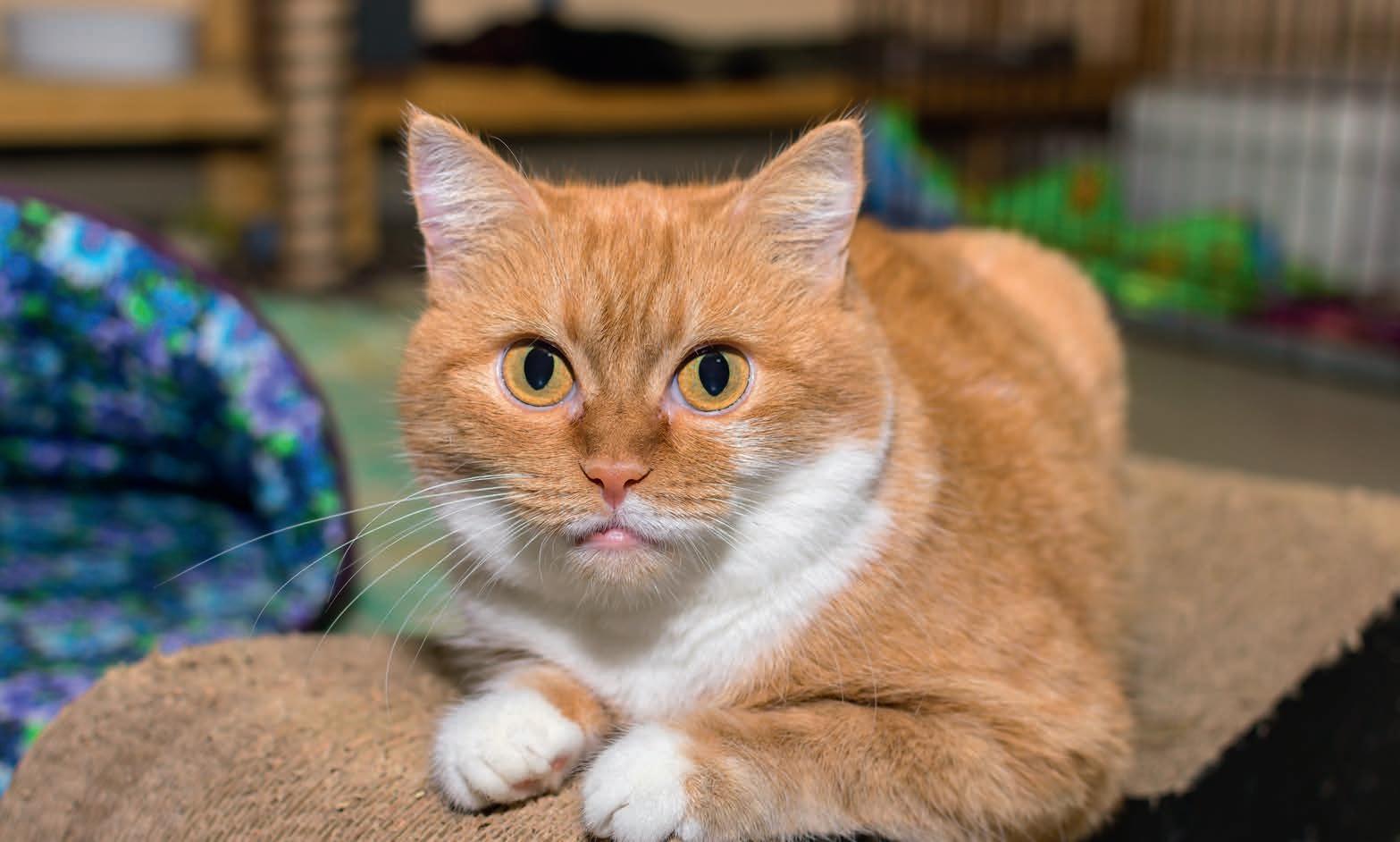
Advertisement
Jill Eckersley
Freelance journalist based in London,with a passion for cats, especially her Mayhew rescue, Mo.
Many cats better suit a home environment than a rescue.
Jill Eckersley talks us through the importance of cat foster carers, and helps you decide if you would be suited to this rewarding role.
Almost all cat charities require ‘foster parents’ for at
least some of the cats in their care. As an example, Freshfi elds, which rescues and rehomes animals of all kinds in the Liverpool and North Wales area, says: “Every nook and cranny in our centre is home to an animal. Fosterers are literally providing space — freeing up a space in our centre for another neglected stray.”
Sometimes fosterers are needed because a particular rescue is simply full, but there are other reasons too. Some cats don’t do well in a cattery environment and need a quiet family home.
Some are recovering from illness, some are old, some are pregnant, some are new mums with kittens, or orphaned kittens too young to be rehomed. Others are loved pets whose owners have to go into hospital and have no friend or relative to care for the cat. Some have behaviour problems that need addressing. Foster carers step in when they’re needed to offer loving care on a temporary basis while the rescue staff continue to look for a forever home.
“Our fosterers are a complete cross-section of people,” said Michelle Smith, rehoming network manager for the Blue Cross animal welfare charity. “They do everything an owner would do for their cats: feeding, socialising, taking them to the vet if necessary, and they help us to assess what kind of permanent home the cat needs. They are people who, for whatever reason, can’t have or don’t want a cat of their own at this time, but do love cats and want to help!”
Fosterers in all shapes and sizes
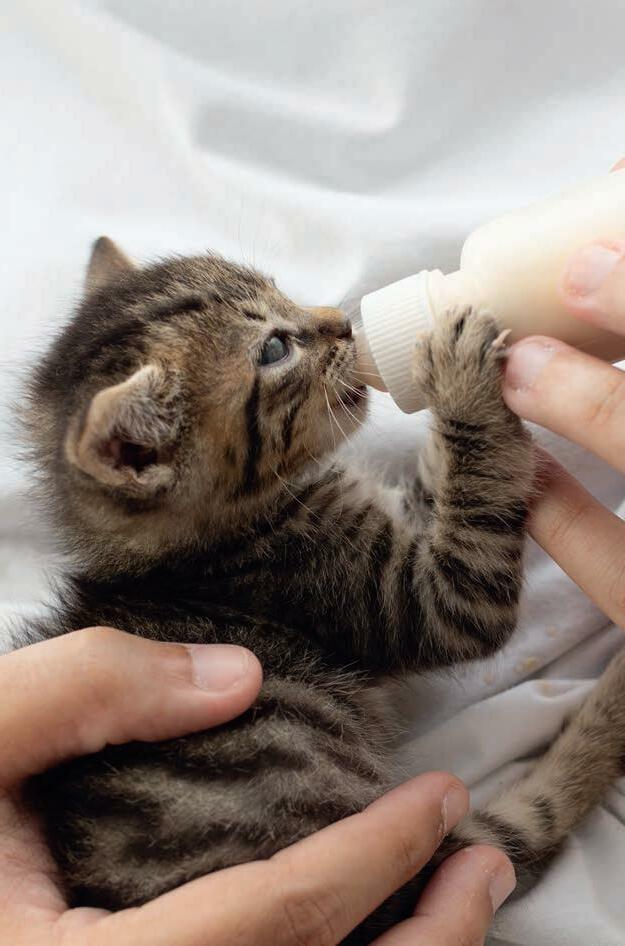
Fosterers can be specialists who enjoy offering retirement homes to very elderly cats. Others are happy to take cats who have previously had behaviour problems, been very nervous or stressed, or have medical issues which mean they need regular injections or special diets. And there are also ‘moggy midwives’ who foster pregnant cats, see them through the birth of their kittens, and help in the socialisation of feline families.
If you think you could be a cat fosterer, the best way to fi nd out what is needed is to look at the websites of as many local and national cat rescue charities as you can fi nd. From the big names like Cats Protection, Blue Cross, Battersea Dogs and Cats Home, and Wood Green, to smaller, local services, they will all welcome your interest.
Apart from loving cats and wanting to help, what do rescue centres look for in their foster carers?
“We look at what any applicant can offer and assess them on their merits; I usually have a gut feeling if someone is right,” added Michelle from the Blue Cross. “You don’t necessarily need a lot of experience, although we do have links with further education colleges who have students doing animal welfare qualifi cations, who may foster for us.
“We also have a whole team of volunteer fosterers who look after cats in their own homes. It’s my job to help recruit, train, and support them. We tell them about the cats who need fostering, giving them as much information as possible so that they know what to expect. Some of our cats are strays we know little about but once they are fostered, the cats’ real personalities show themselves which helps us to fi nd the right forever home.
“We have at least one foster carer who acts as a ‘moggy midwife’ with pregnant cats and their kittens. She has been doing it for years and has seen it all, including hand-rearing kittens when necessary.
“We also have fosterers who take on cats who need regular medication and injections for conditions such as diabetes. Not everyone can cope with that but those who do say they are really happy to make a difference! One of our fosterers took on a cat who had been given up by his owners because he was spraying everywhere. She realised that spraying is often the result of stress and when the cat was placed in her quiet home, instead of among a busy family with a lot of children, he calmed down and never sprayed again.” What is involved?
Like most charities, the Blue Cross will pay all the expenses involved in fostering; providing cat food, litter and litter trays, toys, scratching posts, and veterinary care, which might be a plus point for fosterers on low incomes who are worried about the cost of pet ownership.
Michelle said: “The most valuable thing our foster carers give is their time and commitment so we feel that they shouldn’t be out of pocket.
“And yes, we do sometimes get people we call ‘failed
’Moggy midwives’ may need to care for kittens who are struggling.
fosterers’ who can’t bear to part with their very fi rst foster cat! As long as we feel they can provide the right forever home for that particular cat, it’s fi ne with us. They can carry on fostering for us if the cat they have adopted is happy to share with the newcomer.
“I am always on the end of the phone to help new foster carers and if necessary, they can be ‘buddied up’ with someone locally who is also fostering. I check in regularly with them all to be sure all is well.”
Rules and regulations around fostering vary between charities which means that if one doesn’t seem to be right for you, another may be, so try elsewhere. For example, in order to foster for Battersea you need to live within an hour’s journey from Battersea in South London or their other centre in Windsor. You’ll need to have experience in caring for cats and have no other pets or children under 13. They also say that adult foster cats shouldn’t be left alone for longer than one working day and that kittens should be left for four hours maximum.
Wood Green, The Animals Charity, based in Cambridgeshire, have a team of 150 fosterers who offer “extra comfort and individual attention to animals who struggle at our centre.” They offer full training and support to volunteers and provide all the resources you will need. Interestingly, they quote a ‘moggy midwife’ among their team who does have her own children and who says that caring for mum cats and their tiny kittens helps to teach children to love, respect, and care for animals.
There are also smaller rescue organisations all around the country who don’t have purpose-built centres for the strays they fi nd. Feline Friends in London was founded in 2013 and say that for them: “Reliable fosterers are essential. Without them, the cats we rescue would remain vulnerable. It is so rewarding for foster carers to see a timid cat open up and learn to trust humans. We are looking for secure, calm, indoor homes, and prefer our foster carers to be drivers.”
Most rescues prefer you to be able to drive or have easy access to transport, in case you need to ferry your cat to the vet’s or the centre. It’s also pretty much essential to have a spare room for your foster cat so that it has a safe space to settle in. You don’t, however, need to have a garden which is good news for fl at-dwellers. This is because foster cats need to be kept indoors so there’s no chance they can escape and get lost!

Did you know?

There is no set amount of time a fosterer looks after a cat. Each case is treated individually.
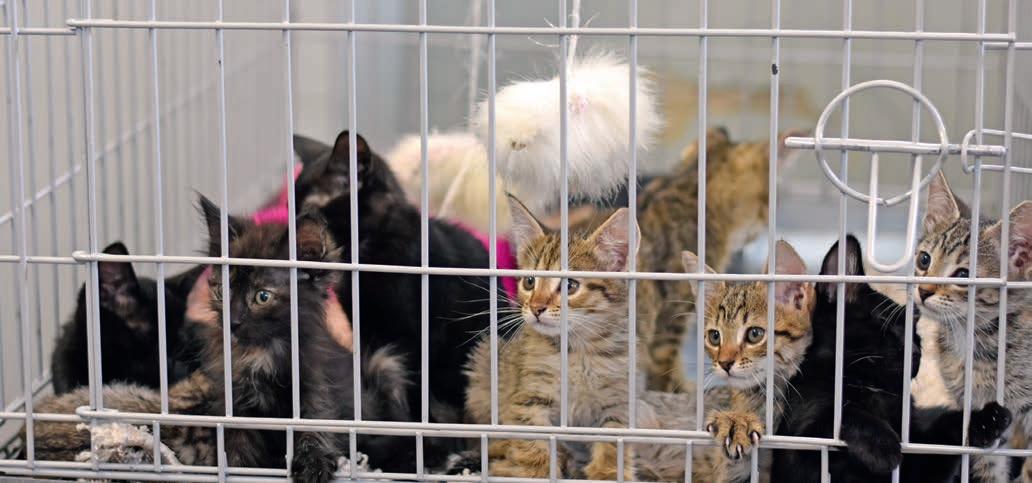
Kittens often thrive in foster care.
SPECIALIST FOSTERING
Some rescue organisations offer specialist fostering services, usually for people and cats in particular circumstances. Several, for example, need people to foster cats for families escaping from domestic abuse. Sadly, pets can also become victims of violence and make it hard for women — or men — to leave abusive partners if it means leaving their cat behind.
Cats Protection’s Paws Protect service has a network of volunteer fosterers who will take in a cat and care for it while the owner is in a refuge or a safe house. These volunteers don’t know who or where the owner is, so are not at risk themselves. Paws Protect provides food and bedding and vet care if necessary and can reassure the owner that their cat is being well looked after.
At the moment this service is only available in parts of the South of England but Cats Protection is hoping to expand into other areas. Mayhew’s Pet Refuge also offers shelter and care for the pets of people in any kind of crisis and foster carers are needed to do this, in their own homes or the owner’s.
The Cinnamon Trust specialises in supporting older people and their pets. Foster carers are needed when older people need hospital care, move to care homes which don’t allow pets, or pass away. homes which dont allow pets, or pass away.
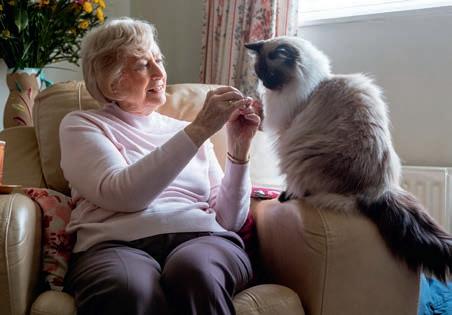
Top Tip!


Fostering a cat can be hugely rewarding but always ensure everyone in your household is on board with the idea.
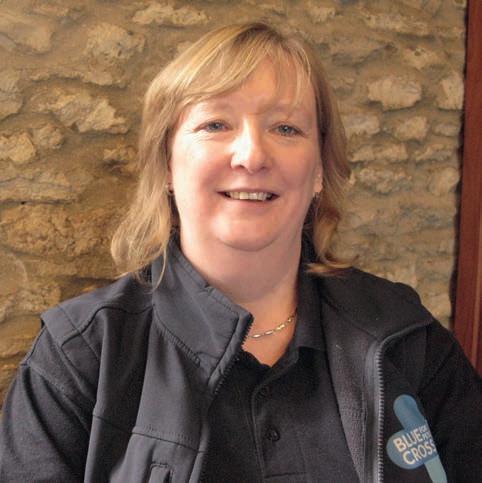

Michelle Smith.


The Cinnamon Trust specialises in supporting older people and their pets.
MARILYN HAS BEEN FOSTERING CATS FROM MAYHEW IN NORTH-WEST LONDON FOR THREE YEARS. Case study
QWhat made you decide to foster cats? A I had been cat-sitting for a friend and found that far from being aloof creatures, they all have individual personalities and are a delight to be around! I watched animal rescue programmes on TV and realised that it was possible to foster. I applied to Mayhew and was lucky enough to be accepted. I started with two Pet Refuge cats and have fostered 18 so far, including the three currently with me.
QDo you take just one at a time or more? A I generally take one or two in the same family group. Having three at once is unusual but they are no trouble at all. I’d be totally out of my depth with mums and kittens but am happy to take any kind of adult cat Mayhew thinks would benefit from a stay with me.
QHow did Mayhew help you train for the job? A I had a home check where I sat down with Georgina, the Cat Welfare Co-ordinator, to discuss what fostering involves and what I could expect. I’ve had a lot of learning to do, but I know I always have Mayhew’s backup and expertise to call on. I’ve learned so much about cat behaviour and welfare.
QWhat do you find rewarding about fostering? A I get a lot out of it! Cats are great to have around and it’s so rewarding to see those who are nervous at first, and hide away, settle in and flourish in my care. I enjoy playing with them, watching them stalk and chase their toys, and it’s lovely when they choose to snuggle up alongside me. I also like to know that I’ve helped them on a stage of their journey to a forever home. With Pet Refuge cats, I have also helped someone who was going through a difficult time and cared enough about their pets to let me look after them for a while. It’s a privilege to be entrusted with my foster kitties!
QAren’t you tempted to keep all the cats? A I must admit that it can sometimes be difficult to see a cat go. There’s one in particular that still tugs at my heartstrings when I think of him.
QHow do you feel when a cat is matched with its forever home? A Although I’m sad when I lose my temporary pet, I’m also excited when they are rehomed. I know they have been carefully matched and their new home can offer things I can’t, such as a garden and a home for life. New owners are kind and often send me photos once the cats settle in, and for me there is always a new cat to foster and focus on.








